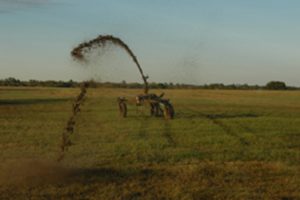Survey results show reuse and disposal methods currently used in the Northeast.
Sludge management infrastructure in the Northeast is experiencing significant challenges, such as aging incinerators, reduced landfill capacity, and emerging contaminants. The Northeast Regional Sludge End-Use and Disposal Estimate report documents how nearly 800,000 tons of sewage sludge were disposed of or beneficially reused in the region in 2018. This representative snapshot provides essential data to better understand the issues and to inform next steps.
“Sludge management is a very real challenge for the Northeast,” said Susan J. Sullivan, NEIWPCC executive director. “This report is foundational for discussions on regional approaches to sludge management and in assisting states in planning for future permitting needs.”
 The report documents that the sludge was primarily landfilled and incinerated, with biosolids beneficially reused (such as applied to agricultural and non-agricultural land) at a lower rate in the region. This data was gathered via an online survey of state biosolids coordinators and representatives from water resource recovery facilities (also known as wastewater treatment plants). The study includes state-specific metrics about the amount of sludge sent to a landfill, beneficial reuse, or incineration, and outlines key issues and pressures facing water resource recovery facilities regarding sludge or biosolids management.
The report documents that the sludge was primarily landfilled and incinerated, with biosolids beneficially reused (such as applied to agricultural and non-agricultural land) at a lower rate in the region. This data was gathered via an online survey of state biosolids coordinators and representatives from water resource recovery facilities (also known as wastewater treatment plants). The study includes state-specific metrics about the amount of sludge sent to a landfill, beneficial reuse, or incineration, and outlines key issues and pressures facing water resource recovery facilities regarding sludge or biosolids management.
Based on responses from the surveys, the states recommend investigating the economic feasibility of regional biosolids facilities as well as how such a facility would be designed. NEIWPCC continues to facilitate interstate collaboration on this issue via our commissioner and workgroup meetings.
“We look forward to continuing to support our member states on this issue in the future, and thank all those in the biosolids community who contributed to the report,” said Sullivan.
Read the full report.
Explore other NEIWPCC publications in our searchable Resource Library.
Learn more about wastewater residuals.